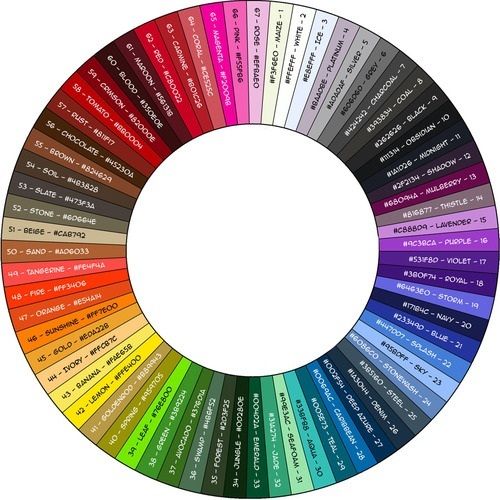@
feming
To expand on the information above, and answer more of your question:
Color ranges are calculated according to all three sets of colors between the parents, so you are calculating their primary range, their secondary range, and their tertiary range separately.
Using the 33-color rule for the widest range of colors, if you have a dragon with a maize (1) primary, and a dragon with an emerald (33) primary, they have a possibility of producing hatchlings with a primary of any color in between, following the wheel clockwise (along the right side).
If those dragons have a secondary range of lavender (15) to beige (51), the difference between them is 38 colors, so this range runs counter-clockwise along the wheel instead.
With the tertiary colors of red (62) and caribbean (28), you turn clockwise - but if the range is between red and teal (29), it flips and you turn counter-clockwise.
It's more common practice to breed for a narrower range of colors, however, with dedicated breeding pairs chosen to reliably produce specific results. Wider ranges offer a color salad which rarely yields coordinated hatchlings, and they may not find permanent homes.
If you're planning to use this knowledge to breed for new colors once the expansion is implemented, I would recommend choosing dragons with colors which are neighboring spokes on the old wheel which will have several new colors inserted between them. For example, soil and slate are directly beside each other now, but after the expansion (June 8th) they will have the new colors umber/sable/clay/dirt/latte/driftwood between them.
This tool will show you the color ranges your pairs offer:
http://fr.fintastic.net/
And this is the full list of colors available after the expansion:
http://flightrising.com/dropbox/howodd/177_turquoise.jpg
The new colors are outlined in red, with an exciting star label. Start with maize at the top, read left to right, then step down to the next level and read right to left (follow the arrows and alternate reading direction for each line. Pearl circles back to maize.)
Please ping me (@Ingrid) when replying to me!














